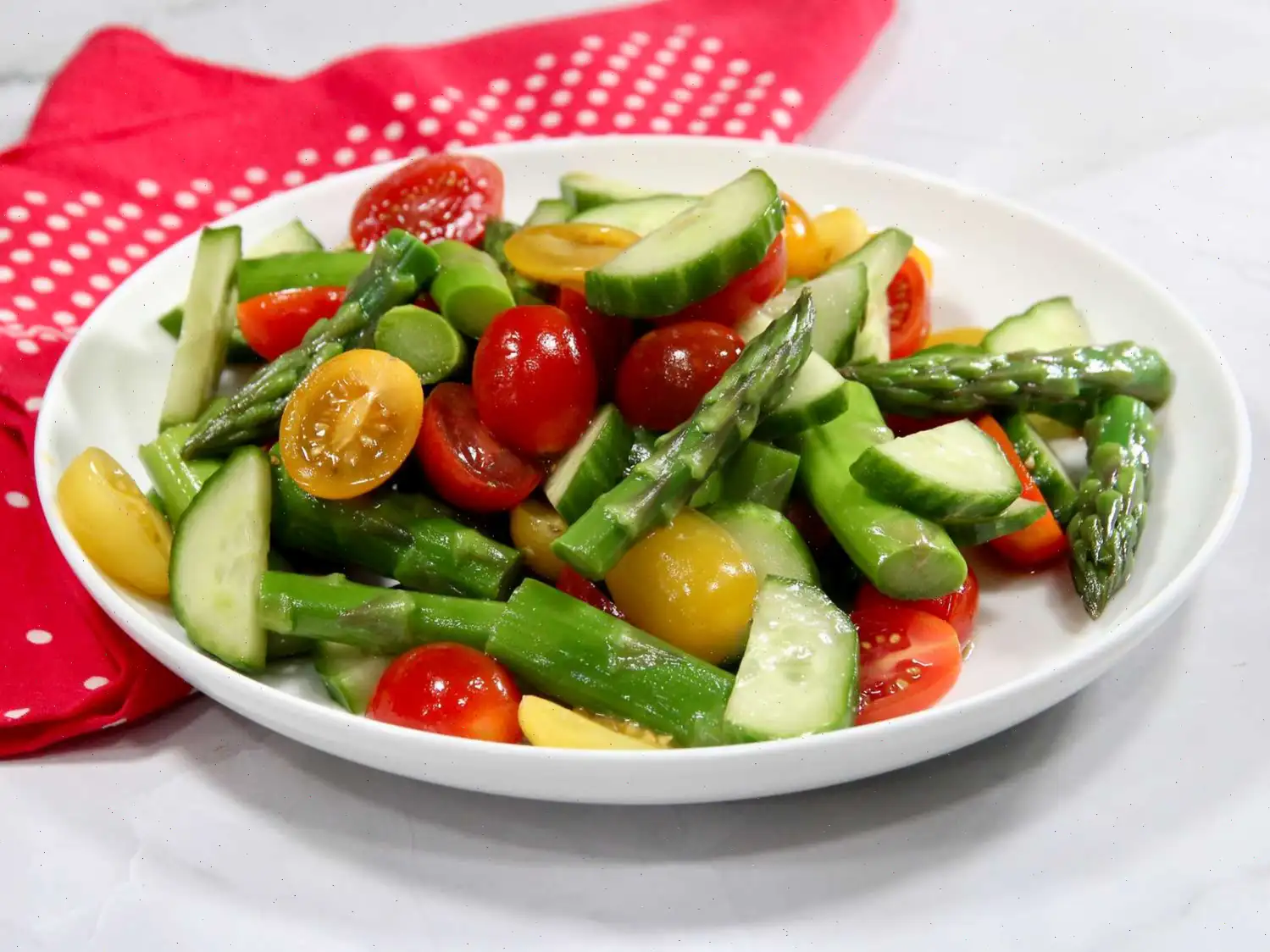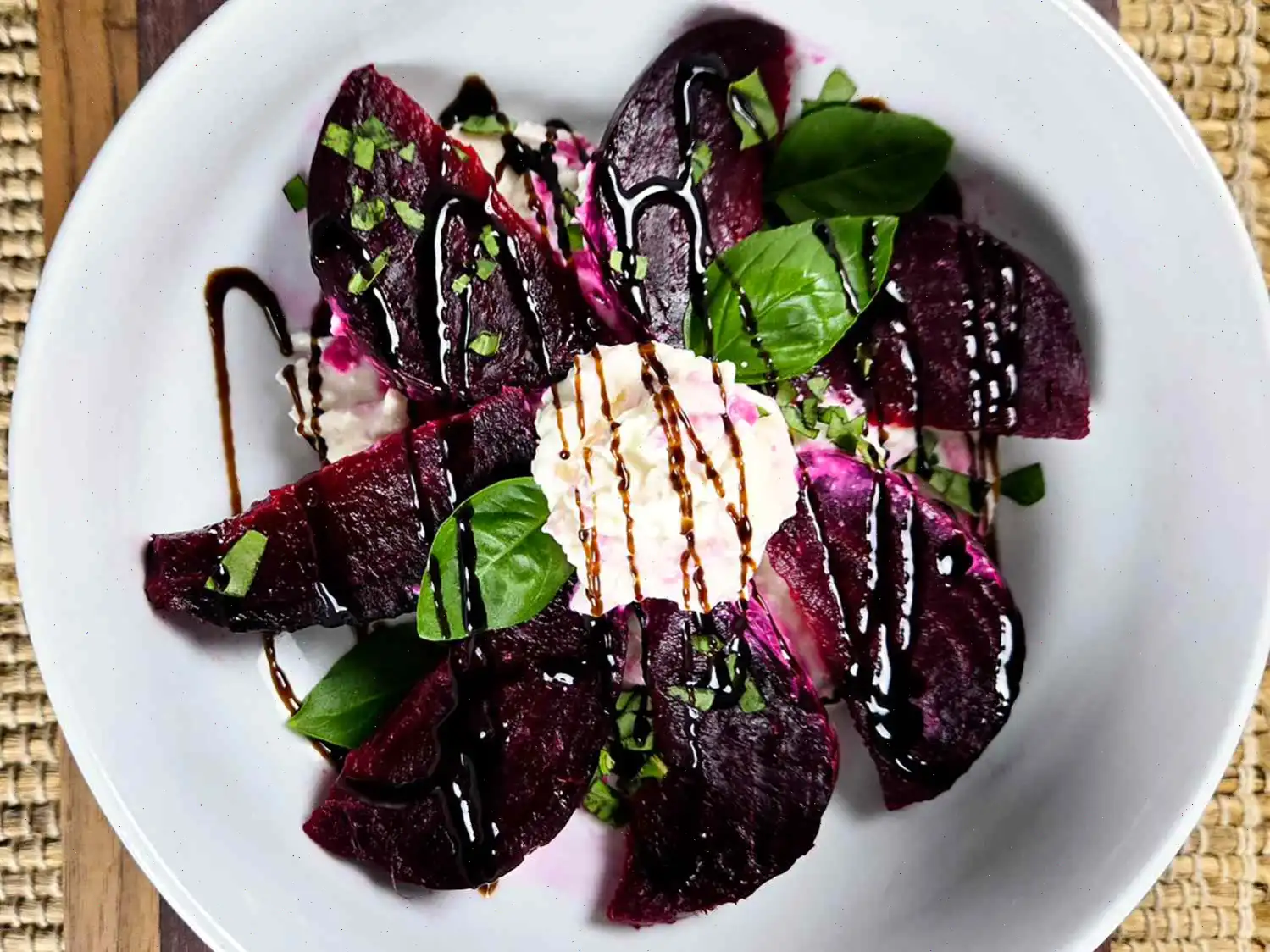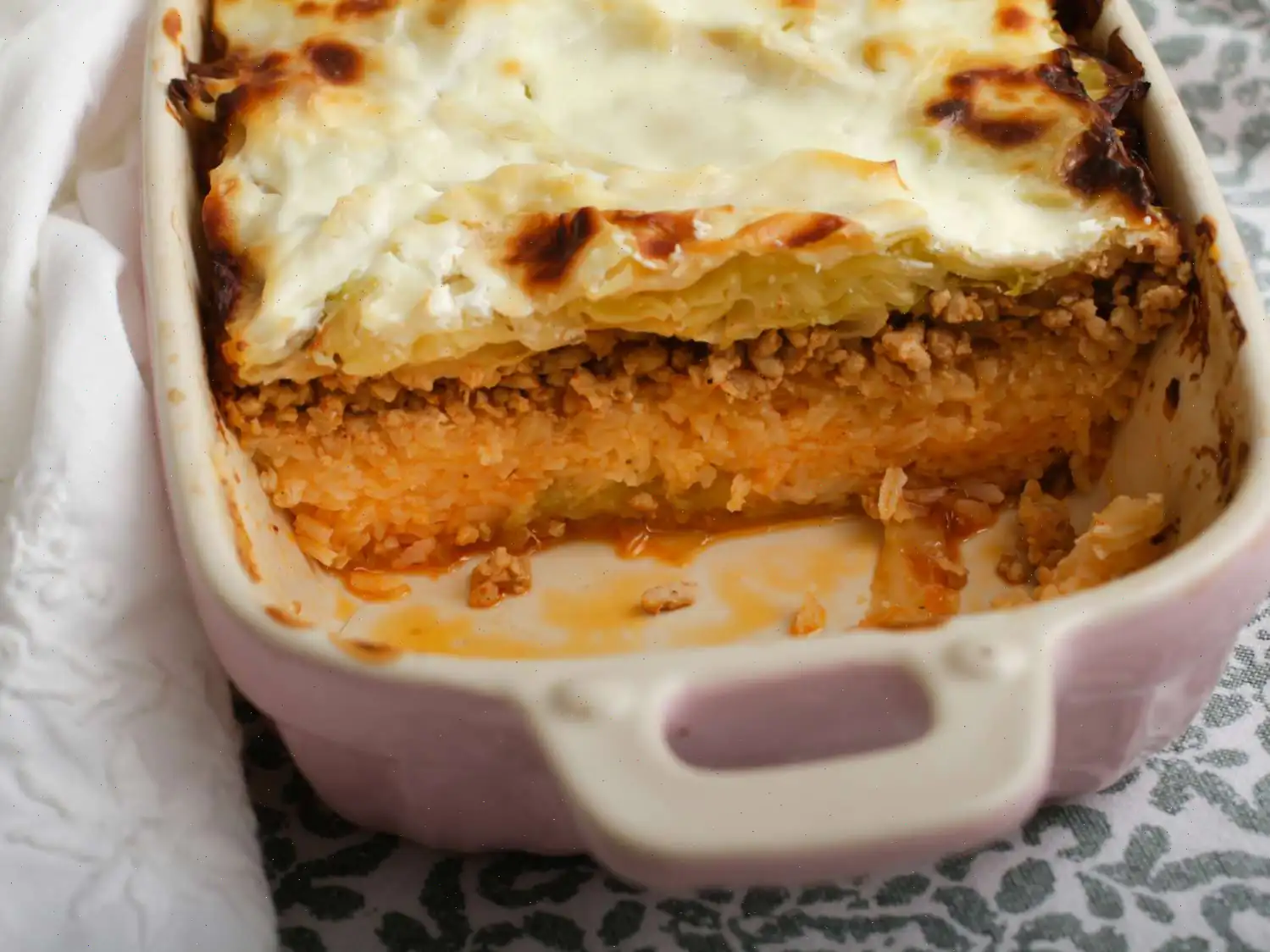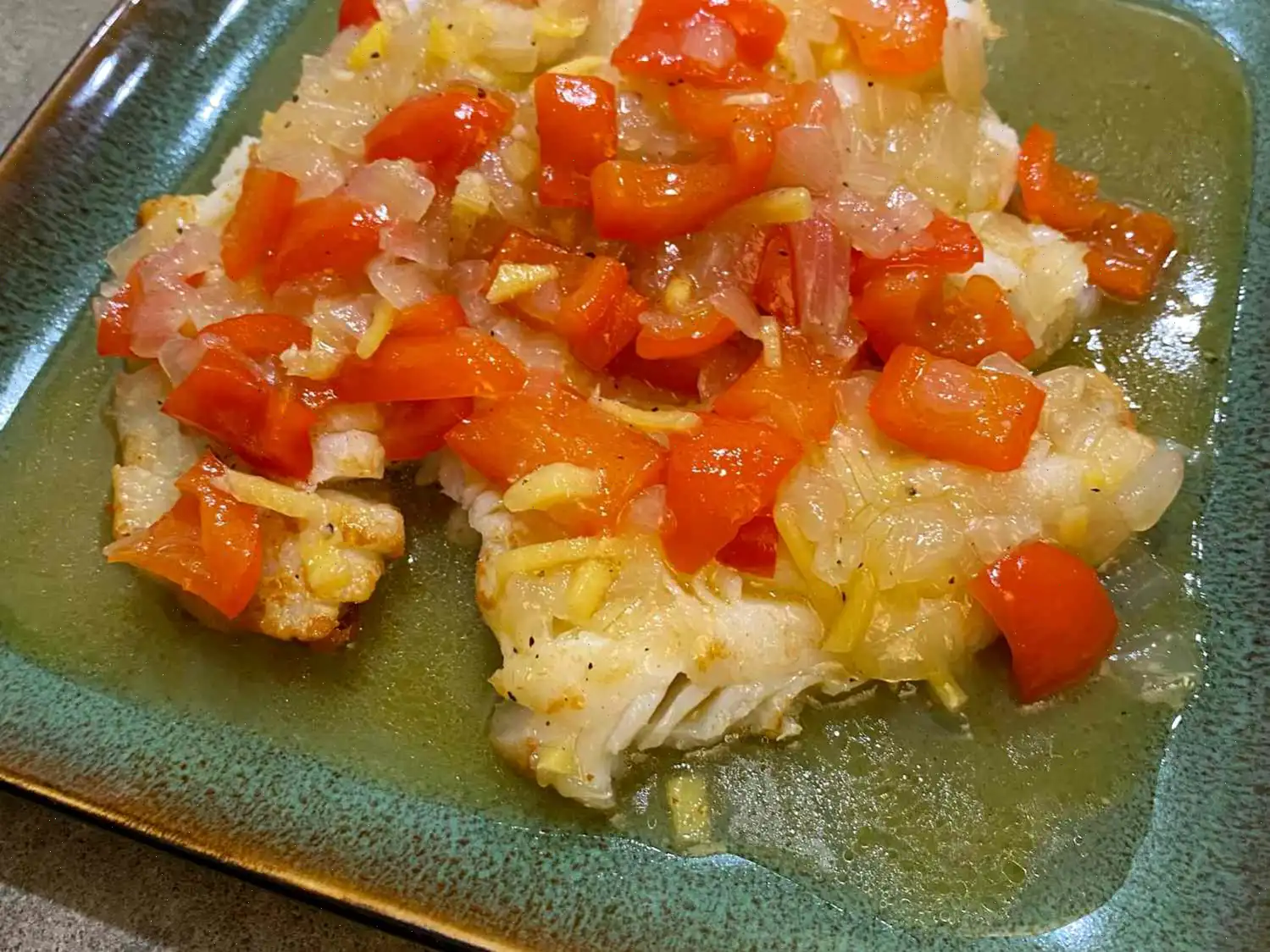
Asparagus, Cucumber, and Tomato Salad with Sesame Soy Vinaigrette Recipe
Servings: 8
Ingredients
- 1 pound asparagus, tough ends trimmed and cut into bite-sized pieces
- 1/4 cup seasoned rice vinegar
- 1 tablespoon low-sodium soy sauce
- 1 tablespoon toasted sesame oil
- 1 teaspoon white sugar
- 1 English cucumber, halved lengthwise and cut into 1/4-inch thick slices
- 1 pint grape tomatoes, halved
Directions
Step 1: Bring a large pot of lightly salted water to a boil. Add the asparagus and cook uncovered for 1-2 minutes until bright green and just tender. Note that thicker asparagus spears may require a slightly longer cooking time.
Step 2: Transfer the cooked asparagus to a bowl of ice water using a large slotted spoon. Let it sit for a few minutes to stop the cooking process. Drain the asparagus well and pat it dry with a paper towel.
Step 3: In a small bowl, whisk together the rice vinegar, soy sauce, sesame oil, and sugar until well combined. Set the dressing aside.
Step 4: In a large bowl, combine the asparagus, cucumber slices, and halved grape tomatoes.
Step 5: Drizzle the prepared dressing over the vegetables and toss gently until all ingredients are well coated.
Cooks Note
To trim the asparagus, you can snap or bend the spears at the end, and they will naturally break where the tough part begins. Use this spear as a guide and line up the rest of the asparagus next to it to cut them to the same length.
Nutrition Facts (per serving)
- Calories: 42
- Total Fat: 2g (2%)
- Saturated Fat: 0g (1%)
- Cholesterol: 0mg (0%)
- Sodium: 76mg (3%)
- Total Carbohydrate: 5g (2%)
- Dietary Fiber: 2g (6%)
- Total Sugars: 3g
- Protein: 2g (4%)
- Vitamin C: 10mg (11%)
- Calcium: 22mg (2%)
- Iron: 1mg (4%)
- Potassium: 259mg (6%)
The Origins of Asparagus, Cucumber, and Tomato Salad with Sesame Soy Vinaigrette
The asparagus, cucumber, and tomato salad with sesame soy vinaigrette is a modern interpretation of East-meets-West cuisine. While fresh vegetable salads have been staples in both European and Asian diets for centuries, the combination of these particular ingredients paired with a sesame soy dressing is rooted in Japanese-inspired culinary trends that gained popularity in the United States during the late 20th century. The use of sesame oil and soy sauce brings an umami richness that contrasts beautifully with the crisp, clean flavors of asparagus and cucumber.
Regional Variations and Local Twists
Although this salad is widely prepared across the United States, regional variations exist. In coastal areas, cherry tomatoes and heirloom varieties are often used for enhanced sweetness, while in the Midwest, farmers might incorporate locally grown asparagus and cucumbers at peak season. Some Southern versions may add a hint of cayenne or paprika to give the salad a gentle warmth. In California, the vinaigrette might be brightened with a splash of citrus juice, reflecting the regions emphasis on fresh, vibrant flavors.
Distinguishing Features Compared to Similar Salads
Unlike a traditional garden salad or a Greek salad, this dish emphasizes a balance between delicate vegetables and a lightly savory, nutty dressing. While a Caprese salad focuses on cheese and tomatoes, and a cucumber salad typically highlights vinegar and dill, the inclusion of sesame oil and soy sauce adds depth and complexity without overpowering the freshness of the vegetables. The brief blanching of asparagus preserves its color and crunch, setting it apart from salads that use raw or fully cooked vegetables.
Typical Serving Contexts
This salad is often served as a refreshing side dish during spring and summer meals. It pairs well with grilled fish, poultry, or tofu and can also be part of a buffet or picnic spread. In more formal settings, it may be presented as a starter in small, elegant portions, emphasizing the vibrant colors and delicate textures. Its light, healthy nature makes it particularly popular at health-conscious restaurants and farm-to-table eateries.
Interesting Facts
- Asparagus has been cultivated for over 2,000 years and was prized by the ancient Greeks and Romans for its flavor and medicinal properties.
- Cucumber is composed of over 90% water, making it exceptionally hydrating and cooling in salads.
- The sesame-soy vinaigrette reflects a fusion of Japanese and Western culinary techniques, a trend that gained momentum in the 1980s in the U.S.
- Blanching asparagus briefly in boiling water preserves its bright green color and enhances its natural sweetness.
- Serving this salad chilled accentuates the crispness of the vegetables and the delicate nutty aroma of sesame oil.








